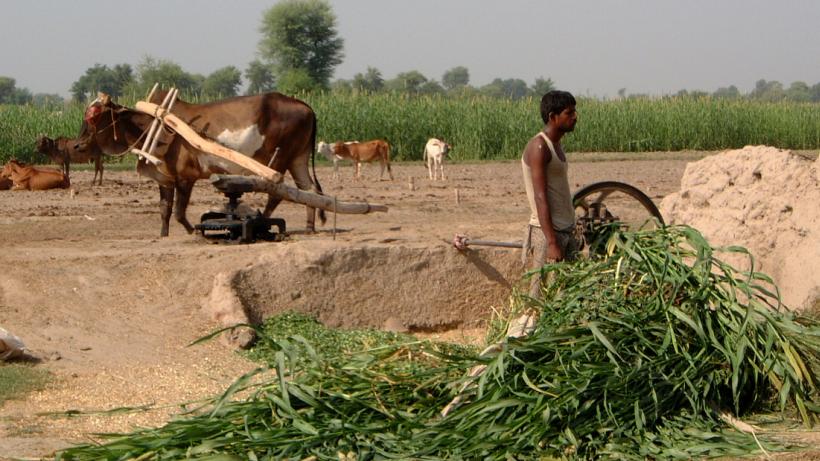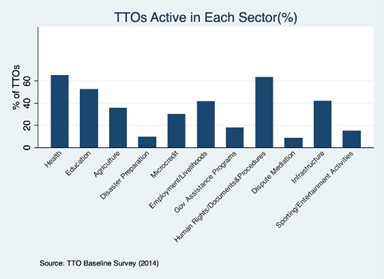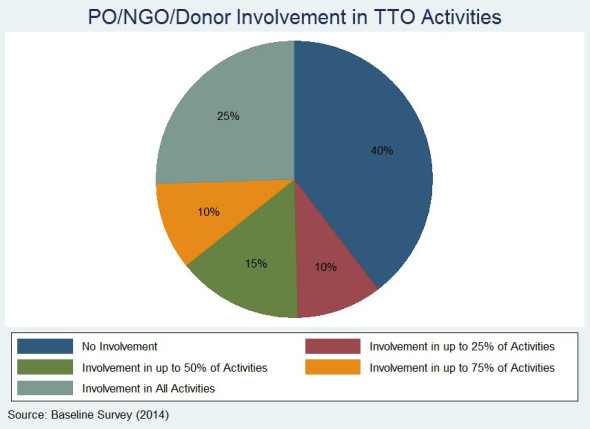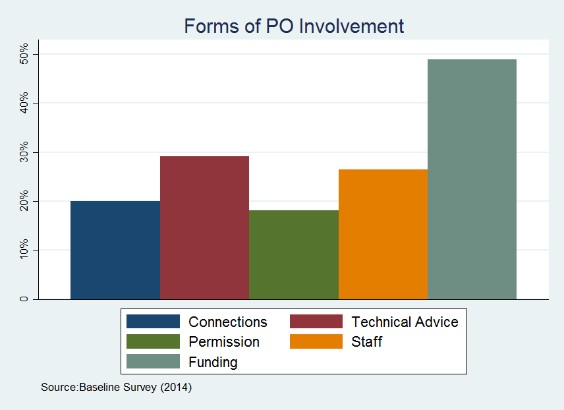
Six insights for engaging community activists in rural development
You can’t overstate the importance of local organisations in providing services for their communities. Pakistan’s flash flood of 2012 washed away the water supply scheme and 1.5 kilometres of a road in the remote village of Kiyar in Khyber Pakhtunkhwa’s Karimabad valley. After a week, the local community restored these services itself.
In the hilly areas of northern Punjab, open defecation polluted the soil and water supply, making water-borne diseases widespread in the region. Activists in Bhattian union council (UC) in Kotli Sattian tehsil convinced over a thousand households to construct latrines, eventually leading the UC to be declared open defecation-free.
The local community in Rostam UC in Sindh – with support from a local NGO – linked women artisans to the Sukkur market, increasing their profit threefold.
These are just a few examples of the vast diversity of activities local communities in rural Pakistan are engaged with. Rural communities have been equipped to take responsibility over local problems through decades of local and international investment in social mobilization. Community organisations – also known as Third Tier Organisations (TTOs) – have been set up at the neighbourhood, village, and UC levels. They are managed by local volunteers, who form elected governance bodies within them.
These organisations are integral to local development and ought to be included in community-level development initiatives. However, UC organisations vary widely in their activities and performance, signalling the need to better tailor social mobilization efforts and policies according to the relevant regional characteristics to maximize success in rural development outcomes.
A 2014 survey[1] of 850 UC organisations supported by Pakistan Poverty Alleviation Fund (PPAF) and its partner organisations captures this variety.
Here are its six most important insights:
1. Rural organisations focus on a variety of issues
As Figure 1 shows, UC organisations work in a wide range of sectors. More than 50 percent of UC organisations are active in health, education, human rights, and assistance with legal documents and procedures.[2] Some frequently reported activities include holding free medical camps, providing first aid training, raising awareness on various health issues (such as polio, dengue, tuberculosis, cleanliness, and hygiene), providing financial and non-financial resources such as school uniforms, books, and stationery to encourage school enrollment, organising education awareness campaigns, and helping community members acquire legal documents such as national identity cards, marriage certificates, and birth and death certificates.
Figure 1:

2. There is significant regional variation in the level of organisation activity
The amount of services offered by UC organisations differs by area. Organisations in KP and Gilgit are most active, working on an average of six activities from August 2013 to August 2014. On the other hand, their counterparts in Balochistan worked on an average of two activities over the same period. These discrepancies may be explained by differences in the timing of social mobilization efforts across different regions, geographic factors (difficult terrain, sparse population, and limited infrastructure), security issues, and limited financial resources which make it harder for local organisations to operate.
3. The level of donor involvement also varies widely
Partner organisations, which consisted mostly of the Rural Support Programmes[3] for this survey, engage with UC organisations in different ways. Figure 2 shows that around 35 percent of UC organisations report active involvement of their respective partners in more than 75 percent of their activities while almost 40 percent of them report no involvement of their partners. Some UC organisations may need more assistance – for example, in the early stages of their development or when they are scaling up a new activity – while others may be more independent. The variation may also be due to partners having more funding to support field staff time and travel in some areas than others, as well as greater distances between organisations in sparsely populated areas like Balochistan.
Figure 2

4. Partners are most involved with the most active organisations
The busier the UC organisation, the more likely a partner will be involved with it. Partners were most engaged with organisations that had more than ten activities in a year. 80 percent of these highly active organisations reported that a partner was involved in at least one of its activities, and 40 percent reported that the partner was involved in all of them. In contrast, about half of the least active organisations (those that had three or fewer activities in a year) reported no partner involvement in any activity. This suggests that partner support helps increase activity, or that organisations with the most initiative are rewarded with more time and assistance from partners (or both). This also suggests potential for more support from partners to less active UC organisations.
5. Funding is the most common form of partner involvement
Almost 50 percent of surveyed UC organisations report that they receive some funding from their partners. However, funding is not the only form of partner engagement. Partners also assist these organisations in developing connections, getting permissions from relevant government departments, providing technical advice, and helping staff carry out activities (Figure 3). This kind of support is likely to help organisations work more independently in the future. Partner engagement also comes in the form of training on issues such as financial management and development of UC/village plans. Around 90 percent of the organisations received some form of training from partners in the last three years.
Figure 3

6. Lack of resources does not necessarily mean low activity
Although UC organisations with the higher funding carry out more activities and serve more people, the differences in activity between them and organisations with little funding are not so stark. The lowest-funded organisations worked on an average of three activities while those with the most funding worked on an average of seven activities between August 2013 and August 2014. The average well-funded organisation is involved in the construction of infrastructure projects regularly used by 4,500 people. These organisations also served about 15,000 people over the year by providing services, information, or training. But even the organisations with the lowest funding delivered services to an average of 5,000 people.
Further research
Although these numbers do not account for differences in the quality and extent of services delivered by UC organisations, they demonstrate that positive outcomes are possible even with minimal financial resources.
We are running an experiment[4] in collaboration with PPAF to test the impact of both self-reporting and non-financial incentives on the governance and service delivery performance of UC organisations across the country. The organisations are being asked to regularly report their own progress and achievements, rather than having achievements reported primarily by staff of the partner organisations after field visits. Some organisations are also being offered non-financial incentives in the form of a recognition package, as these are volunteer organisations that may be motivated by social praise especially within their own communities.
The findings from this project will help donors, the government, and other development sector organisations devise and revise their engagement strategies with community organisations to increase their effectiveness and sustainability.
This blog originally appeared on Developing Pakistan.
[1] This survey was conducted in the fall of 2014 by a joint research team from the Lahore School of Economics, Oxford University, and Duke University in collaboration with PPAF which is the apex institution managing this social mobilization process with support from local partner organisations. The survey gathered data through meetings with each UC organisation’s executive body (EB) on their governance, activities, future plans and characteristics of the EB members. The survey also gathered data from 109 field offices of the 19 partners that are directly involved with these local community UC organisations.
[2] An organisation is classified as active in a sector if it worked on at least one project/activity within that sector between August 2013 and August 2014.
[3] The Rural Support Programmes Network (RSPN) is the largest development network of Pakistan, with an outreach to over 43 million rural Pakistanis. It consists of 11-member Rural Support Programmes (RSPs), which have been operating since 1982. The survey was conducted with both RSP and non-RSP organisations. The largest partner organisation for the survey is the National Rural Support Programme (NRSP) that is engaged with 60% of the TTOs, followed by Sindh Rural Support Organisation (SRSO) (11%), Sarhad Rural Support Programme (SRSP) (8%) and Agha Khan Rural Support Programme (AKRSP) (7%).
[4] This research is being supported by funding from PPAF, International Growth Centre (IGC) and the National Science Foundation (NSF).

